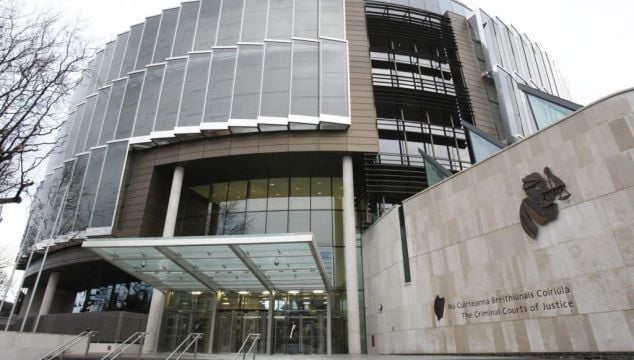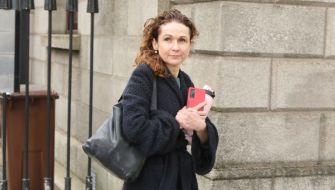The decapitated and “skeletonised” remains of a missing Dublin man were found curled up in a foetal position in a shallow grave, while attempts had been made to burn his body, a pathologist has told a murder trial.
The jury also heard from the expert witness that, in her view, Philip Finnegan’s death was caused by multiple stab wounds to the body, including two fatal ones to his liver and aorta.
The Central Criminal Court was further told that the identity of the deceased, who had been missing for almost a month, was confirmed by fingerprint after skin that had “slipped away” from a finger was recovered from the soil of the gravesite.
Stephen Penrose (38), of Newtown Court, Malahide Road, Coolock, Dublin 17, has pleaded not guilty to murdering Mr Finnegan (24) at Rahin Woods, Rahin, Edenderry, Co Kildare on August 10th, 2016.
The trial has heard that Mr Finnegan was missing for 30 days before a dog walker and his two pets found remains buried in a shallow grave in the Co Kildare woods.
Evidence has been given that a garden fork, a shovel and the blade of a knife were found close to the remains. A garden glove with substantial fire damage, a black funnel and the remains of a mobile phone were found nearby buried in a fire pit.
Postmortem
Giving evidence today, Assistant State Pathologist Dr Margaret Bolster told Brendan Grehan SC, prosecuting, that she conducted a postmortem on the remains of Mr Finnegan at Naas General Hospital on September 3rd and 4th, 2016.
The deceased’s identity had been confirmed through his fingerprints, where the epidermis had slipped away from his left middle finger and was recovered in the soil of the shallow grave, the court heard.
The witness said she went to Rahin Woods at 1.10pm on September 3rd, where she saw leg bones protruding from the top of the earth. “The bones were practically defleshed and the body was in a foetal position with both knees curled up to the chest area and the back bent down,” she explained. Mr Finnegan’s body was removed in that position intact with the surrounding soil to preserve it as much as possible.
Mr Finnegan’s head was partially covered with a protective vest in the grave and the right arm was encased in a blue t-shirt, which had melted onto the stab vest.
In his opening address, Mr Grehan said that Mr Finnegan had “certain troubles in the past” and had taken to wearing a protective vest.
The back of the t-shirt was pulled up over the deceased’s head and there was a watch around the left wrist which showed the correct time. No clothing was found on the lower body and a number of tattoos could be identified despite the advanced decomposition of the remains.
Skeletal remains
The court heard that forensic anthropologist Ms Lorraine Buckley, who is a bone expert, was brought in to assist Dr Bolster as all the flesh on the body was gone and the remains were skeletonised. Ms Buckley had established that the body was male.
Dr Bolster said attempts had been made to cut up the body.
The head was separated from the neck bone at the fourth cervical vertebrae. “The neck bone had been disarticulated and it appeared to be cut through,” said Dr Bolster, adding that anything sharp such as a saw or axe could have been used.
There was also evidence of extensive burning to the upper left shoulder, the palm of the left hand, along the left upper arm and the left forearm.
There were 13 stab wounds to the body, including one to the stomach and liver and another extending into the aorta, which was 11.2cm deep. The majority of the stab wounds were to the deceased’s back but others included the right ear lobe, left forearm, left elbow joint and left cheek.
In her evidence, Dr Bolster said there were two cuts to the left hand and stab wounds to the arm, which were suggestive of defensive injuries.
A toxicology report showed that Diazepam and cannabis were present.
Dr Bolster pointed out that the time of death was impossible to establish due to advanced decomposition and the burning of the body.
In conclusion, the witness said that efforts had been made to dispose of the body by cutting it up. The body was also burned and buried in a shallow grave.
Dr Bolster said Mr Finnegan’s cause of death was impossible to establish with absolute certainty but in her view it was from multiple stab wounds to the body, which included two fatal ones to the liver and aorta.
'Smokey smell'
Forensic anthropologist Ms Lorraine Buckley, who specialises in skeletal remains, told Mr Grehan that she noticed a strong smell of ammonia, which was probably from urine, when the body was removed from the soil at Rahin Woods. The witness said she also smelled burning, “a smokey smell”.
Ms Buckley carried out an X-ray of the bones at Naas General Hospital to assist her in determining that the body was male. No bullets were identified.
She said the legs and feet had almost fully skeletonised and the muscles of the anterior chest wall had decayed so that the ribs were visible.

The trial continues on Friday before Mr Justice Owens and a jury of eight men and four women.
In his opening speech, Mr Grehan said the jury would hear evidence that a bloodied glove was found in the woods which was a DNA match to the accused man Mr Penrose.
Evidence has also been given that Mr Penrose’s phone connected to a cell site close to the area where the victim’s body was found.
Mr Penrose dispensed with what was his second legal team on Tuesday and is continuing to decline to attend his trial, which is in its fourth week at the Central Criminal Court.







